Are Historical Heroes Allowed to Have Prejudices in Children’s Literature?
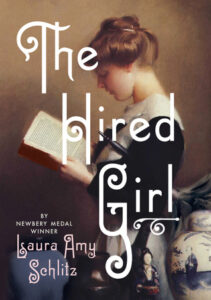 I don’t usually post anything aside from videos on Sunday but after attending the IBBY Conference in NYC this past weekend this topic came up and seemed well worth pursuing.
I don’t usually post anything aside from videos on Sunday but after attending the IBBY Conference in NYC this past weekend this topic came up and seemed well worth pursuing.
Not long ago I reviewed The Hired Girl by Laura Amy Schlitz. It’s a fine, unique historical novel about a 14-year-old girl who escapes a grim farm existence by running away to Baltimore to work as a hired girl. She’s the product of a cruel father who denies her any schooling leaving her little comfort except that which comes to her from books.
ADVERTISEMENT
ADVERTISEMENT
Recently this particular title has been the focus of a great deal of discussion over at Heavy Medals due to its mention of American Indians. Much to my surprise, people are commenting on the book’s merits due to a passage in which Joan thinks the following:
“It seemed to me–I mean, it doesn’t now, but it did then–as though Jewish people were like Indians: people from long ago; people in books. I know there are Indians out West, but they’re civilized now, and wear ordinary clothes. In the same way, I guess I knew there were still Jews, but I never expected to meet any.”
Folks appear to be mighty perturbed over this section of the story. It made me think a lot about what we demand of our historical protagonists in our contemporary children’s novels. Take Joan. Her education is that of a white working class girl in early 20th century America. She has a very limited world view and knows about Jewish people solely though the context of Ivanhoe. Now we look at that statement she thought. Considering white attitudes of the time, is it believable that Joan would think this of American Indians? Quite frankly, considering her schooling I found it, if anything, a little difficult to believe that her attitude wasn’t worse.
But let us not talk about being accurate to the attitudes of someone in Joan’s time and place and consider instead whether or not Ms. Schlitz should have included the passage at all. Is it harmful to her young readership to encounter a sympathetic protagonist with these opinions? Might they think them legitimate feelings? Might they not pick something up from such statements?
 First, I’d like to address the question of whether or not children, or in this case middle school students, are capable of decoding an ignorant character’s prejudices if that prejudice is not specifically called out. Joan is wrong about a lot of things. You see this and you know this pretty early on. And while it is entirely possible that there will be young readers out there who have never encountered positive images and portrayals of American Indians in their children’s literature, the notion of white people “civilizing” other races and nations is not unique here. Do kids walk into historical novels with the understanding that people in the past thought things we cannot or should not think today? Is it the responsibility of the author instead to cut their all their sympathetic historical figures from a contemporary cloth and imbue them with our own attitudes towards race, gender, sexuality, etc.? I am reminded of a moment in Red Moon at Sharpsburg when author Rosemary Wells had her Southern Civil War era protagonist say of her corset that, “It constricts the mind.” A statement made by a young woman without outside influence or context, I might add. It felt wrong because it was wrong. A broad attempt to shoehorn contemporary attitudes into a historical tale.
First, I’d like to address the question of whether or not children, or in this case middle school students, are capable of decoding an ignorant character’s prejudices if that prejudice is not specifically called out. Joan is wrong about a lot of things. You see this and you know this pretty early on. And while it is entirely possible that there will be young readers out there who have never encountered positive images and portrayals of American Indians in their children’s literature, the notion of white people “civilizing” other races and nations is not unique here. Do kids walk into historical novels with the understanding that people in the past thought things we cannot or should not think today? Is it the responsibility of the author instead to cut their all their sympathetic historical figures from a contemporary cloth and imbue them with our own attitudes towards race, gender, sexuality, etc.? I am reminded of a moment in Red Moon at Sharpsburg when author Rosemary Wells had her Southern Civil War era protagonist say of her corset that, “It constricts the mind.” A statement made by a young woman without outside influence or context, I might add. It felt wrong because it was wrong. A broad attempt to shoehorn contemporary attitudes into a historical tale.
But going back a bit, let’s again try to answer the question of why it was necessary for Ms. Schlitz to include this passage at all. It would have been easy to keep out. And Schlitz is not a writer who dashes off her prose without thought or consideration. So what is the value of its inclusion?
Does it come right out? It does! In fact, when you have a protagonist capable of awkward beliefs that are of their time, it would make so much sense to just not mention any of them, right? To do otherwise would be to offer a layer of complexity to an otherwise good character. Are books for young people capable of that complexity?
Let’s say the passage removed. Let’s say all passages of American Indians were removed (there’s more than one, you know). Let’s say mentions of American Indians were removed from all books for children written about this time period but only when those mentions were prejudiced. Let’s say all American Indians themselves were removed as well. See? Isn’t it so much easier to write historical fiction when you don’t have controversial topics to trip you up?
 I am reminded of the lesson of Patricia C. Wrede’s Thirteenth Child. Do you remember this controversy from 2009? It came up in the pre-Twitter era (it was around but not what it constitutes today) when outrage had a less constructive echo chamber in place, so you’d be forgiven for having forgotten it. The novel takes place in a historical America where magic is common and the Land Bridge never occurred. This America has woolly mammoths and slaves but no American Indians. In a conversation online in 2006, long before the book’s publication, the author said this about her title:
I am reminded of the lesson of Patricia C. Wrede’s Thirteenth Child. Do you remember this controversy from 2009? It came up in the pre-Twitter era (it was around but not what it constitutes today) when outrage had a less constructive echo chamber in place, so you’d be forgiven for having forgotten it. The novel takes place in a historical America where magic is common and the Land Bridge never occurred. This America has woolly mammoths and slaves but no American Indians. In a conversation online in 2006, long before the book’s publication, the author said this about her title:
The current plan is to have the primary difference before 1492 be that the various pre-historic attempts to colonize the Americas were unsuccessful; thus, no Mayans, Incas, Aztecs, Mississippi Valley civilization, or Native Americans of any sort…. The absence of an indiginous population in the Americas is obviously going to have a significant impact on the way things develop during the exploration and colonization period, and I’m still feeling my way through how I’m going to finagle that to get to where I want.
Which is, basically: A North America in which the threat of Indians was replaced by the threat of un-extinct megafauna…
Dubbed “MammothFail”, people were incensed that an entire ethnic group could be done away with because they were (their words) inconvenient to the plot. It was the first time I saw an angry internet pile-on (the like of which we’re almost accustomed to these days) and it shocked me. At the same time, the anger was understandable.
So what did we learn? Excluding someone doesn’t mean you’re doing them some kind of a service.
ADVERTISEMENT
ADVERTISEMENT
If Joan’s thoughts about Indians are prejudiced or nasty is she no longer worth rooting for because we’ve seen another side to her? Or will the child reader recognize ignorance when they see it? Joan is ignorant about so many things in the world. This is just one of them.
I think a lot of this comes down to the degree to which we trust child readers. I don’t think for one second that Ms. Schlitz shares Joan’s opinions of American Indians and what it means to be “civilized”. What I do think is that she works as a school librarian and sees children every day. I think that over the years she has learned from them and seen the degree to which they are capable of catching on to the subtlety of a book. I think she knows that this passage reflects more about Joan than it does about American Indians of the time and she believes kids will recognize that too. The question I’m interested in is whether or not we believe that characters with personal prejudices should be presented to our young readers AT ALL because kids and teens can’t handle that kind of complexity.
Now I haven’t even touched on one of the major concerns with passages like this one. Mainly, what happens when a Native kid picks up this book and encounters this description? What is the responsibility of the author to contemporary kids facing historical prejudices? That kid reads these words and suddenly the whole book (or maybe just the character of Joan) is soured for them. It’s something we’re all talking about today.
In the end, can prejudiced/racist characters be heroes when they appear in books for youth? Or are there subtleties at work here that make this more than just a black and white issue? I like to think we’re capable of trusting our readers, regardless of age. The Hired Girl believes them capable for rejecting Joan’s dated opinions. We should extend to them that same respect.
Filed under: Uncategorized
About Betsy Bird
Betsy Bird is currently the Collection Development Manager of the Evanston Public Library system and a former Materials Specialist for New York Public Library. She has served on Newbery, written for Horn Book, and has done other lovely little things that she'd love to tell you about but that she's sure you'd find more interesting to hear of in person. Her opinions are her own and do not reflect those of EPL, SLJ, or any of the other acronyms you might be able to name. Follow her on Twitter: @fuseeight.
ADVERTISEMENT
ADVERTISEMENT
SLJ Blog Network
Happy Poem in Your Pocket Day!
More Geronimo Stilton Graphic Novels Coming from Papercutz | News
Parsing Religion in Public Schools
Environmental Mystery for Middle Grade Readers, a guest post by Rae Chalmers
ADVERTISEMENT

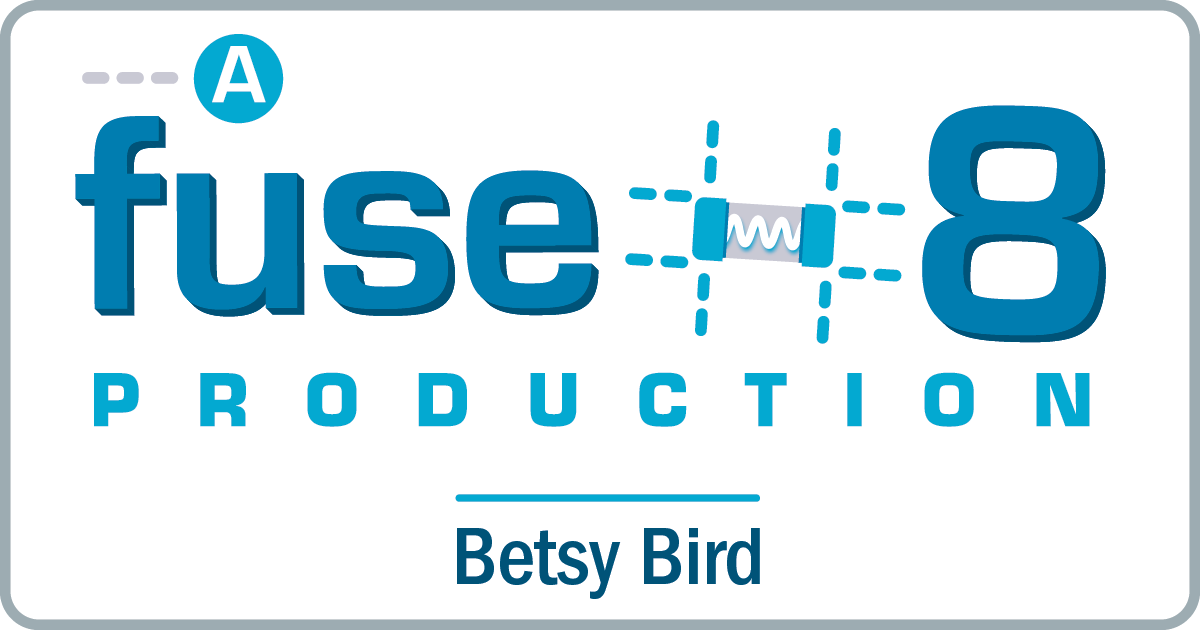

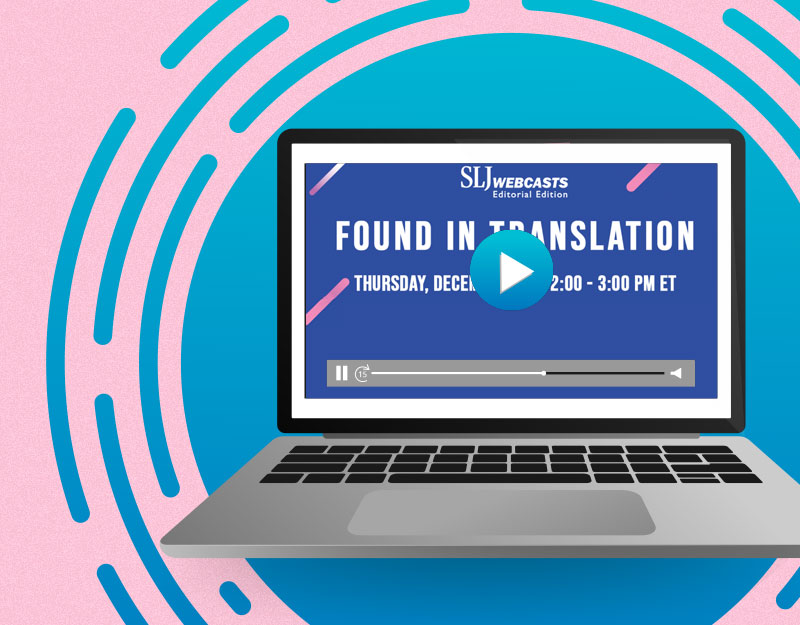
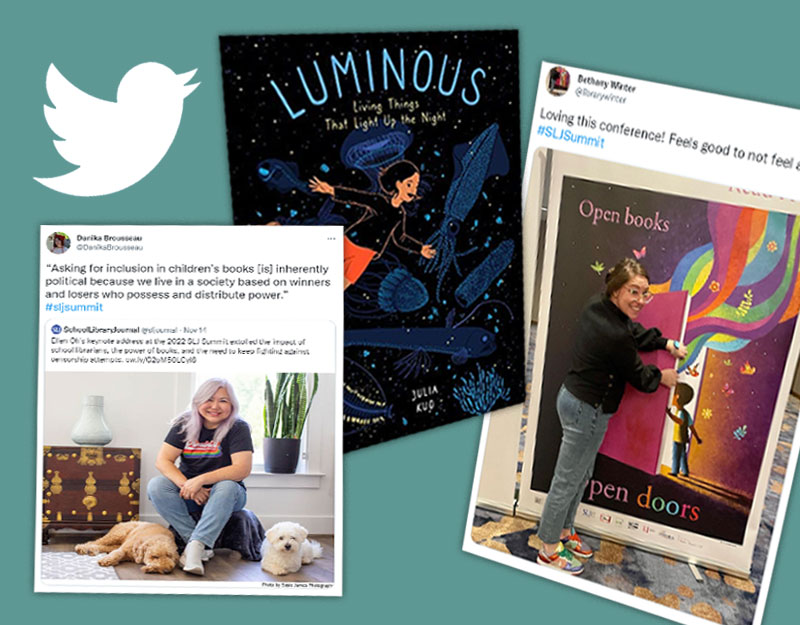
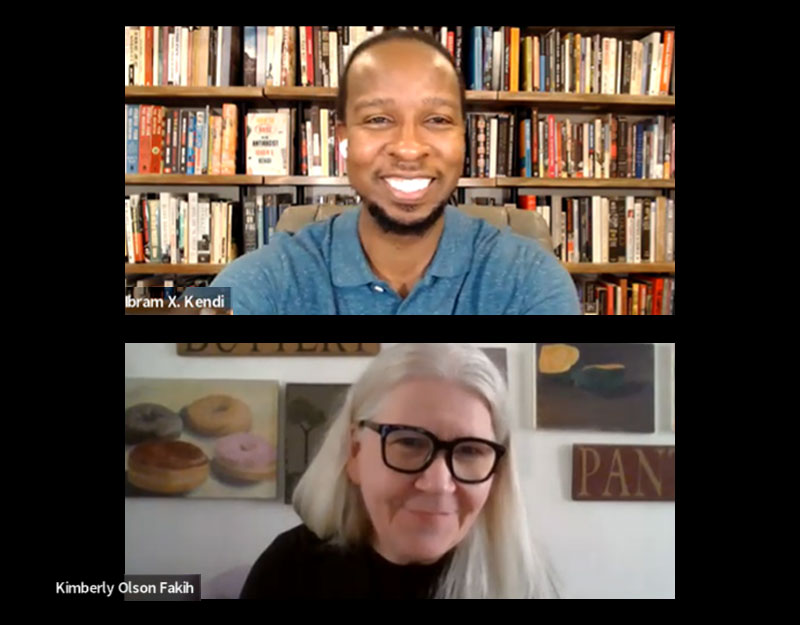
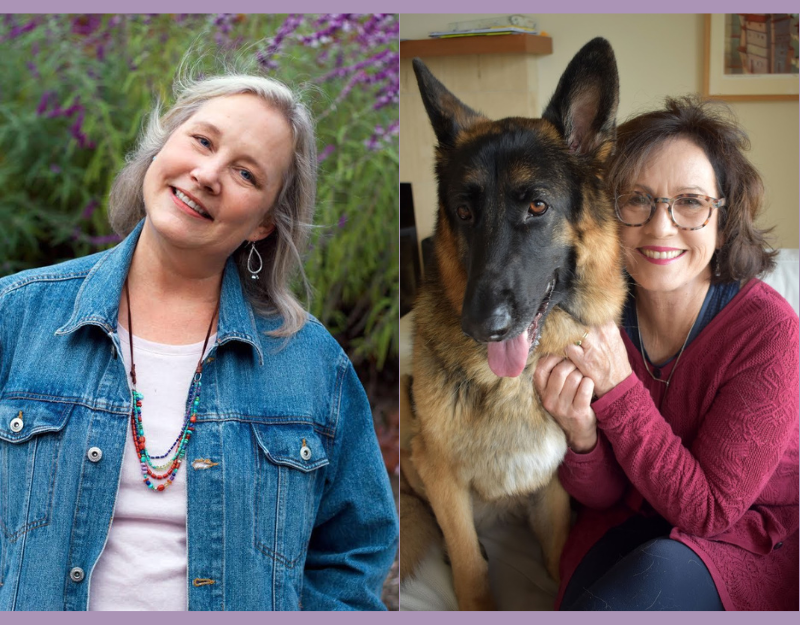
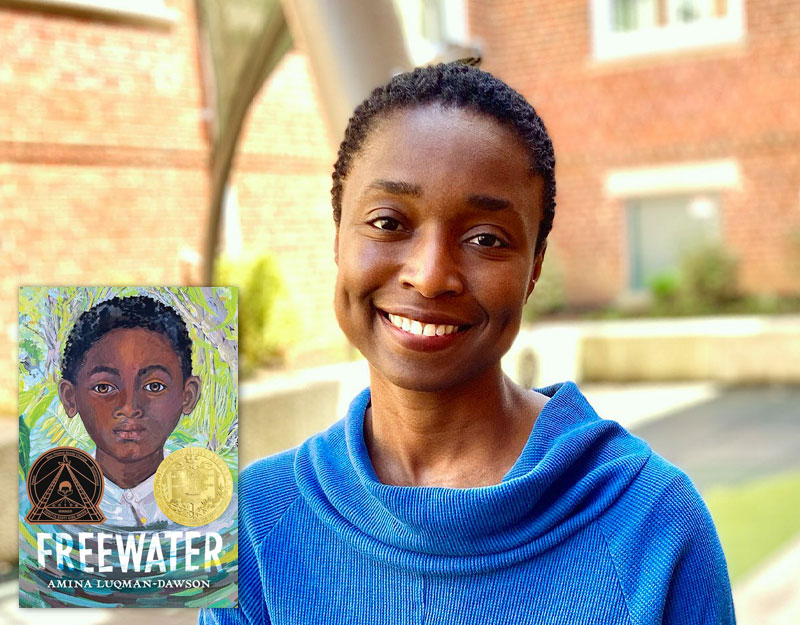
I agree 110%!
Your post makes me think of Mildred D. Taylor’s 1997 ALAN acceptance speech, in which she grapples with writing scenes and using language that is potentially painful for readers in her historical fiction about the Logan family:
“I am hurt that any child would ever be hurt by my words. As a parent I understand not wanting a child to hear painful words, but as a parent I do not understand not wanting a child to learn about a history that is part of America, a history about a family representing millions of families that are strong and loving and who remain united and strong, despite the obstacles they face.
In the writing of my most recent work, titled The Land, I have found myself hesitating about using words that would have been spoken in the late 1800s because of my concern about our “politically correct” society. But just as I have had to be honest with myself in the telling of all my stories, I realize I must be true to the feelings of the people about whom I write and true to the stories told. My stories might not be “politically correct,” so there will be those who will be offended, but as we all know, racism is offensive.
It is not polite, and it is full of pain.” http://scholar.lib.vt.edu/ejournals/ALAN/spring98/taylor.html
The crucial difference is that you’re writing about the hero of the story holding and expressing racist perspective about , while Taylor is depicting white antagonists in the African-American Logan family’s. I’m eager to hear what others have to say about this.
Thanks, Betsy Bird. Who on earth is reading The Hired Girl and thinking, “That Joan — she really *gets* people”?
I’ve seen variations of this conversation in many places recently, and at bottom I’m not sure the question of this post’s title is really the one being asked. (Or at least, not the one being asked by people raising concerns about the treatment of prejudiced viewpoints in various children’s books.) To me, the question is one that can be more difficult to articulate– not whether a text should include bigoted or otherwise objectionable views, but *how* those views are presented and contextualized within the story. And often, that reading of “how” depends a great deal on one’s own perspective and experiences.
For example, my reading of Joan’s attempt to convert her Jewish employers is informed by my own experiences as a Jewish woman, and also by my knowledge of many other such stories– and the way that conversion is often used as a motif in books written by non-Jews about Jewish experiences. (One could call it a trope.) If I, in sharing my reading, raise issues with Joan’s conversion attempt, then the counter-argument that this element is historically accurate and true to Joan’s character doesn’t really address the issue of context that I’m raising. The question isn’t just about an author’s decision to include prejudiced views and actions, but about *how* the author’s contextual decisions often reflect views the author may or may not be aware of. It seems worth noting that these discussions occur most often in cases where authors are writing about experiences outside of their own identities.
I think the related question– about whether writers should have faith in young readers’ ability to negotiate contextual clues and not take prejudiced views or actions at face value– also falls within this framework. Often, what I see is writers (and critics) discounting the perspectives of young readers who are able to contextualize the *author’s* viewpoint in ways that go against a dominant reading.
For anyone in these discussions who hasn’t read it, I highly recommend Toni Morrison’s book Playing in the Dark: Whiteness and the Literary Imagination. See, for example, her reading of Huck Finn. Many might argue that Twain offered an accurate portrayal of the racism of his time period, and that he trusted his readers to see that this is a commentary on racism and not an endorsement of such views. But Morrison’s reading gets at the deeper question I see being asked in these discussions– about how Twain’s decisions as a writer reflect on his own, biased, imagination.
Betsy, while I appreciate you taking this on, you take an argument in which I question one line I one book, in the context of a Newbery Award discussion, to suggest that such a questioning means I distrust child readers In toto, and any controversial passages at all.
We have to be able to talk about issues of race in children’s books, as passionately as we do about the rest of it, without making this a “Black or white” discussion.
I don’t believe Betsy is suggesting you distrust child readers in toto, just that you distrust them about this.
The one question I think we can start with is: why did you put the question about what a Native kid reading the book might think as your last concern? Why aren’t we all making that our first concern? Well, because we’re centering our whiteness, is why. Because our entire society centers whiteness, is why. Because we want to get derailed in BUT ARE WE ALLOWED TO EVEN WRITE THIS (clutches pearls clutches pearls). You’re allowed to write any darn thing you want. But that means we, the critical adult audience, are also allowed to then ask hard, uncomfortable questions about that thing you wrote. That’s just part of the deal.
I find that, often, one part of this argument is – you must be the kind of person who only wants NICE things to happen in fiction. You must not care about THE TRUTH. To which, of course, the only response is: depends on who you’re asking to tell you the truth. Let’s take a look at Tim Tingle’s HOW I BECAME A GHOST. There’s a book that is raw and unblinking in its portrayal of what happened to the Choctaw people as they were forced onto the Trail of Tears. Would anyone who has read it say that it is “sanitized” or “nice” version of history? Certainly not. And yet examples like this rarely come up in these conversations about “REAL history isn’t gentle!” Yes, marginalized people know this more than anyone.
I’d also come back to your final line: kid readers, like all of us, can reject something as untrue and still be impacted by it. Sarah raises a good point – “historically accurate, tho!!” doesn’t address the larger issues of what happens when a reader in the here and now interacts with this text. To say that they will simply say, “Well, that’s how it was back then!” and go about their merry way doesn’t address that, in many cases, that’s how it still is today.
I would love to trust readers, too, but trust itself rests on respect, and that respect has not been there for so many people/peoples who have been othered by the media, whether we’re talking about children’s books or films, or whether we’re talking about the past or the present day.
Did anyone click on the link that Jonathan provided? Not the one to my site but the one to his Google search? I think it actually makes my point. Go look. The first three images in the first line (Men/Women/Male Native) are stereotypical–but more important–they are costumes that people can get for Halloween. Because THAT is what comes up first, I think it tells us a lot about what people know about respect for Native people–or rather that they do NOT respect Native people. Maybe they dress up that way out of ignorance, or out of a misguided sense of what it means to honor a people, but I do think it speaks volumes about why we cannot trust the reader.
Once you’re at the point where we’re looking at a particularly book (that someone has already made the decision to publish and promote) and a character and a time period, it certainly makes sense for that particular character to have particular misconceptions and bigotries built into her way of seeing the world.
But when it starts to feel like the primary role of American Indians or people of color in the body of juvenile historical fiction is to provoke white people’s prejudices (or demonstrate what a hero they are for NOT holding those prejudices), or to spur white people to action… that’s a problem for me. When I find myself getting frustrated and exhausted by the way male authors write about women, I can retreat to a big pile of books by women, about women, to reset my internal expectations. (And I hope that men are reading them, too.) Native kids (and non-Native kids who walk around in our current, still-racist world, as Debbie points out) have a MUCH smaller pile of books to resort to–far too few for a kid who’s a prolific reader.
So I guess my question would be “how much more historical fiction about white people do we really need?”
So I guess my question would be “how much more historical fiction about white people do we really need?”
I would argue that stories about lower-class white characters that do more than play on poor-but-good stereotypes, especially in certain historical time periods, are still necessary. The rampant fetishization of the Victorian and Edwardian upper class among adults interested in the time period (just look at vast swaths of steampunk or some of the uglier ends of Downton Abbey fandom), to the detriment of discussions of poverty and the working classes that made that kind of living possible, suggests to me that books like The Hired Girl still absolutely have a place. And as a Catholic child who was often frustrated by depictions of nominal Protestant Christianity in books (The Baby-Sitters Club and Little Women both come to mind as examples that confused and surprised me), the presence of an explicitly Catholic main character like Joan, however imperfect she is, would have meant a great deal to me.
Are those needs as pressing as the need for books that reflect greater racial diversity and respect for audiences of colour? No, I don’t think so. Do those books need to include lines like the one in question here? No, I don’t think so, either. But I question the notion that we’ve exhausted historical fiction about white characters entirely, when there are intersectional issues that remain underwritten and underpublished.
Sure! To be clear, I don’t think the answer to my question is “none.” But as people who are outside the Newbery committee, we have the luxury of looking at this particular text as a part of a larger field of literature. My first, lizard-brain, instinctive pushback to “but it’s historically accurate!” is often “but this might be the only line a student reads about American Indians all year!”, and that’s a problem that this book alone can’t solve, and that I don’t expect it to.
I do consider plucky lower-class historical white girls to be overrepresented (without having actually done a count), but you’re right that many of them appear in poor-but-good morality tales, and I’d believe that few of them are explicitly and accurately Catholic.
Thank you for your thoughtful and swift reply. My comment was a bit too much tangent for me to be comfortable with, in retrospect, and so in interest of not derailing the conversation further than I already have (and I apologize for that), I just want to acknowledge that I’ve read your answer and wish you a good day.
Particularly because my next book tells the story of a prejudiced white character being temporarily fostered by a black family, this discussion has been close to home for me. I felt like it was appropriate to put the character’s assumptions about black people right out front and to make it clear from whence they came (her grandmother) – but I felt like it was equally important to correct those assumptions within the text. Maybe that’s me not trusting my readers to get it right, but it’s like that comedian who quit because he wasn’t sure people were laughing at the right part of his jokes — you don’t want to hold up something to ridicule (or, at least *I* don’t) and let a reader walk away with the idea that the idea is correct. To my mind, there are indeed subtleties in this – racism is insidious in its pervasiveness, as is sexism, etc.. I know it’s gauche for writers to “send messages” in our work, and we have all recently heard and rehashed the big argument against having an “diversity agenda” in writing, but I believe we all write with purpose, if we are wise. There are choices to be made in subtly asserting our beliefs and gently righting misconceptions, as it were… And all writers make a choice to acknowledge this or not, I guess, based on what we feel is important.
Books like THE HIRED GIRL, which have a lot to like in them despite the issues, provide the means for us to learn how to be fans of problematic things, to learn how to listen and sit with the discomfort of maybe not catching things which upset other people, and for me, at least, to be a better writer. I know thinking about this won’t help me produce a perfect book – good luck with that, huh? – but a more thoughtful book in this world of reflexive, unrepentant and systemic prejudice can only be a good thing.
Thank you, Tanita! That’s exactly what I felt when I first read Debbie Reese’s post about this: “the discomfort of maybe not catching things which upset other people.” I had no memory of the passage, so I’m grateful to other people for pointing it out. It still surprises me that I can breeze by passages that might be hurtful to others, because, as a librarian, I think it’s part of my job to help kids read critically, and to show them it’s okay to be critical of things they like. I hope conversations like this will make me a better librarian, too.
I’m with the writer of this article all the way. Ms. Bird is correct that falsification of history (and our ancestors’ sensibilities) for the sake of contemporary political correctness not only shortchanges the readers, it robs them of the opportunity to know where mankind has been and how far we’ve come. It’s one of my peeves with so much “historical” fiction. It isn’t historical at all. It’s contemporary with decorations of older superficial details.
Writing for young readers is a responsibility, and writing about other times and places for any age is a greater responsibility still. Tell the characters’ truth.
Betsy, I responded above in defense against your two paragraphs starting “Does it come right out…” as I felt that was putting words in my mouth, but perhaps I was only choosing to take personal offense. I do think that’s skewing the argument I was trying to make at Heavy Medal. If we can put that aside, I agree with nearly everything you say, except for your final assessment of how well this all works in HIRED GIRL. I’ve tried to explain why here: http://blogs.slj.com/heavymedal/2015/10/15/the-hired-girl/#comment-218683
Thanks, Nina. Naturally I meant no offense to you. I should note that the term “it comes right out” is a screenwriting phrase I picked up from my husband about elements of a storyline that can be removed without detriment to the whole.
Into this discussion, and by no means to turn it into a discussion about something else, I just want to interject that we need more Roman Catholic characters in children’s lit. When I first read The Hired Girl I cringed for Joan’s behavior regularly (who didn’t?), but one of my first thoughts was that I couldn’t believe she *was* Roman Catholic. It blew my socks off! She’s the main character too, not a secondary character! All through reading the book I felt grateful for that.
Thank you, Betsy. This was a beautifully, thoughtfully written post. I feel like a lot of the conversation occurring on Heavy Medal is “But what will the children think?!” – which is the *exact* argument challengers used when attempting to ban two books from my library in the last couple years (Yummy: The Last Days of a Southside Shorty and Monster).
This post focuses on how young people might read irony in a text– that is, whether they recognize the ironic distance between author and character (which I still don’t think is the issue those objecting to the passage are really raising.) But I just wanted to add that I think the dynamics of how young readers interact with books, and with the prejudices in them, is one of the central themes in The Hired Girl itself. Joan is first and foremost a reader. Her knowledge of the world comes partly through the books she reads, and she also, increasingly, uses her knowledge of the world to read against those beloved books. This back and forth of contextualization and re-contextualization includes her attitudes and conceptions about Jewish people, for example, and about prejudice. She uses the knowledge she’s gleaned from Ivanhoe to try to understand the Jewish people she meets, and then uses her experiences with the Jewish people she knows to contextualize attitudes presented in Ivanhoe.
But I think the picture of reading included within The Hired Girl also points to some of the problems people are addressing. As Debbie notes, this work of contextualization depends on the other experiences with which one reads against a text. Joan’s reading when she’s at the farm is different than her reading once she’s lived with the Rosenbachs. For most non-Native readers in the US, those other experiences include a litany of misrepresentations in books and media, little accurate knowledge, and few relationships with actual Native people. When it comes to the presentation of Jewish people in this book, I would also argue there are many images and associations Schlitz herself has absorbed from books like Ivanhoe, which maintain their hold on the imagination despite real knowledge of Jewish people. This includes the supposedly “good” stereotype of the idealized Rebecca. I think books can work on the imagination even when we have the means to put them in context.
As Angie says, all of this also continues to center the perspective of the reader who is encountering people and prejudices from the outside– not the reader whose context is their own very real, painful experiences as the target of those prejudices. Books like Roll of Thunder center the child *experiencing* prejudice, which is different from a book that focalizes a character with prejudiced views. In the later case, again, I don’t think the question is one of accuracy or even inclusion, but of how the author treats and understands both those views, and the reader who has experience with them that the author lacks.
I want to first say that I haven’t read this book yet, so I am not directly commenting on it.
Yes–“Books like Roll of Thunder center the child *experiencing* prejudice, which is different from a book that focalizes a character with prejudiced views. In the later case, again, I don’t think the question is one of accuracy or even inclusion, but of how the author treats and understands both those views, and the reader who has experience with them that the author lacks.” That’s what I was trying to say at the end of my earlier post when I referenced Taylor’s speech. It *is* different.
And it’s messy, and potentially hurtful, or plain exhausting to encounter a hero character articulating such biases. And it’s potentially silencing to those who are targeted by them as the focus is on the (in this case) white character and her growth and not the marginalized and maligned.
But it seems like (historical) fiction that avoids constructing white character with such problematic stances risks conferring a different kind of invisibility on the oppressed….one that says in effect, “it wasn’t (isn’t) so bad.” I think of listening to THE HELP on audiobook (a great, full cast recording) and simultaneously being engaged with the readers’ performances and gobsmacked by the indulgence of liberal white historical wish-fulfillment–as in “Yeah, if I lived back then I totally would have been on the ‘right’ side of history like Skeeter. Writing those stories down, helping to change things. Yeah.”
Thanks. I don’t know, and this is something I’m struggling with in my own work, too. How does one consciously address whiteness, for example, from the inside, without re-inscribing it? I do think there are fundamental craft issues in the work of contextualizing a flawed viewpoint character, though. I often wish there could be more attention paid to those craft strategies, and less to the question of whether they are necessary– or whether readers can draw different conclusions from that contextualization than the author might have intended. Or whether it matters when these dynamics do harm. At a recent panel discussion, Daniel José Older called on white writers not only to talk about writing the other, but to take a hard look at how we write the self. This is maybe part of the question you’re getting at? I hope it’s what I’m getting at in my work, too. But I think, as a person writing from a dominant culture, this also includes an acknowledgement of the ways this effort can so easily slip back into a re-centering of dominant perspectives and desires– even in this discussion– and of readers who share them. Which in turn includes eliding the power structures behind who gets to tell which stories, and which and whose stories sell. (With The Help being an egregious example.) And, that there needs to be an accompanying willingness to hear, and acknowledge the significance of how we are seen and read otherwise.
I love this question: “How does one consciously address whiteness, for example, from the inside, without re-inscribing it?” This is exactly what I am thinking about and wrestling with. Thanks for that articulation, and thanks to *all* for this fascinating, difficult, and important discussion.
Hi all,
My comments have been here, and at Heavy Medal, and at Read Roger. I’ve tried to pull them into a coherent essay at my site, located here:
http://americanindiansinchildrensliterature.blogspot.com/2015/10/a-native-perspective-of-laura-amy.html